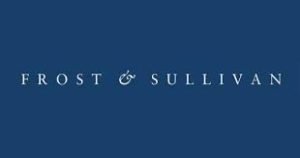 Workwear and uniforms clothing must be both high performance and fashionable. Market growth is driven by fabric innovation, and an influx of labour expanding the user base. Germany, Scandinavia, and France are key geographic hotspots propelling revenues as the adoption of technically superior workwear gains momentum. Manufacturers must invest in portfolio expansion and strategic partnerships in order to succeed in an evolving ecosystem.
Workwear and uniforms clothing must be both high performance and fashionable. Market growth is driven by fabric innovation, and an influx of labour expanding the user base. Germany, Scandinavia, and France are key geographic hotspots propelling revenues as the adoption of technically superior workwear gains momentum. Manufacturers must invest in portfolio expansion and strategic partnerships in order to succeed in an evolving ecosystem.
“Balancing profitability and customer satisfaction is a key competitive factor in the workwear and uniforms market,” said Visionary Science Research Analyst Sanjana Prabhakar. “The new customer is socially aware, environmentally conscious, price-sensitive, and demanding value-add services, such as laundry and inventory management, compelling manufacturers to partner with rental participants, procure cotton from fair-trade sources, and incorporate fibers obtained from recycled plastics in order to meet expectations.”
Analysis of Western European Workwear and Uniforms Market, new analysis from Frost & Sullivan’s Future of Personal & Protective Equipment (PPE) Growth Partnership Service program, reveals that the market generated revenue of €7.01 billion in 2016, and is expected to grow at a compound annual growth rate (CAGR) of 2.5 per cent until 2021. The research analyses market trends, drivers, restraints, technologies, materials, and competitors within key segments, including blue workwear, white workwear, career wear, casual wear, and uniforms. A detailed regional breakdown, covering Germany, France, the United Kingdom, Ireland, Iberia, Italy, Benelux, Scandinavia, and Alpine, is provided.
Developments driving growth in the Western European workwear and uniforms market include:
– New partnerships between workwear manufacturers and rental service providers, such as Ballyclare and Berendsen, are boosting rental service revenues via laundry-as-a-service (LaaS).
– End users in the United Kingdom, Ireland, Germany, and France are embracing on-demand, start-up services such as Zipjet and Laundrapp.
– Partnerships will grow between fabric manufacturers such as Cordura, Gore–Tex, and Cocona, and workwear suppliers like Fristads Kansas. This brings advanced materials and sensors to the market, enabling multiple functionalities, such as durability, water resistance, and body climate management.
– A growing customer preference towards eCommerce is forcing manufacturers to develop their online infrastructure. Promotional clothing manufacturers such as Workwearexpress.com are providing clothing with logo incorporation and delivery within 24 hours.
– High demand for breathable and aesthetically appealing workwear by end users is driving sales across all segments.
“With increasing research into technical and functional fabrics, responsive materials, and wearable electronics, advancements such as Internet of Things will penetrate the workwear market in the near future. The attire of the future will be smart, aware, and able to adapt itself to its surroundings,” noted Prabhakar.



